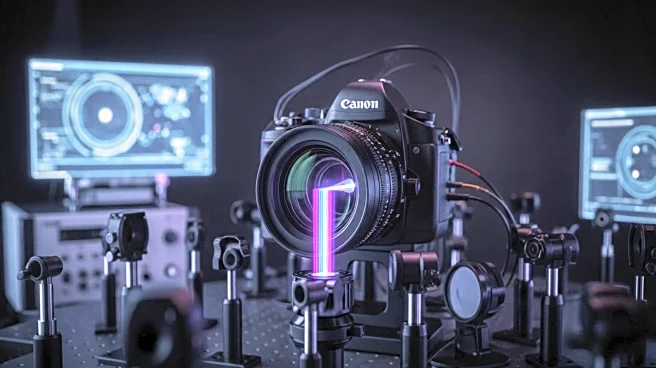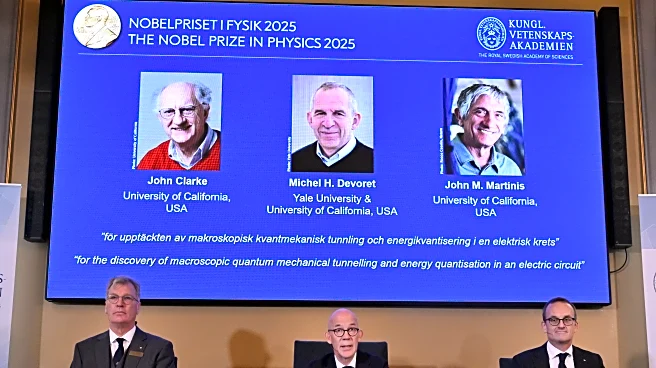What is the story about?
What's Happening?
A study published in Nature explores the concept of photonic parallel spaces, where a single artificial material can correspond to two different optical spaces. This phenomenon allows for the independent functioning of these spaces without mutual interaction, resembling the concept of parallel spaces or multiple realities for photons. The research demonstrates that these optical spaces can be accessed through different boundaries of the material, enabling unique functionalities such as photonic wormholes, which can transport photons invisibly from one point to another.
Why It's Important?
This research has significant implications for the field of optics and photonics, potentially leading to advancements in optical computing, telecommunications, and imaging technologies. By manipulating light in novel ways, these findings could pave the way for the development of new devices that operate in multiple dimensions or realities, enhancing the capabilities of current optical systems. The ability to create photonic wormholes and parallel spaces could revolutionize how information is transmitted and processed, impacting various industries reliant on optical technologies.
What's Next?
Future research will likely focus on refining the design of artificial materials to enhance their optical properties and explore practical applications. The development of devices utilizing photonic parallel spaces could lead to breakthroughs in areas such as secure communications, advanced sensors, and quantum computing. Continued exploration of these concepts may also uncover new phenomena in the realm of photonics, further expanding the boundaries of current scientific understanding.
AI Generated Content
Do you find this article useful?














